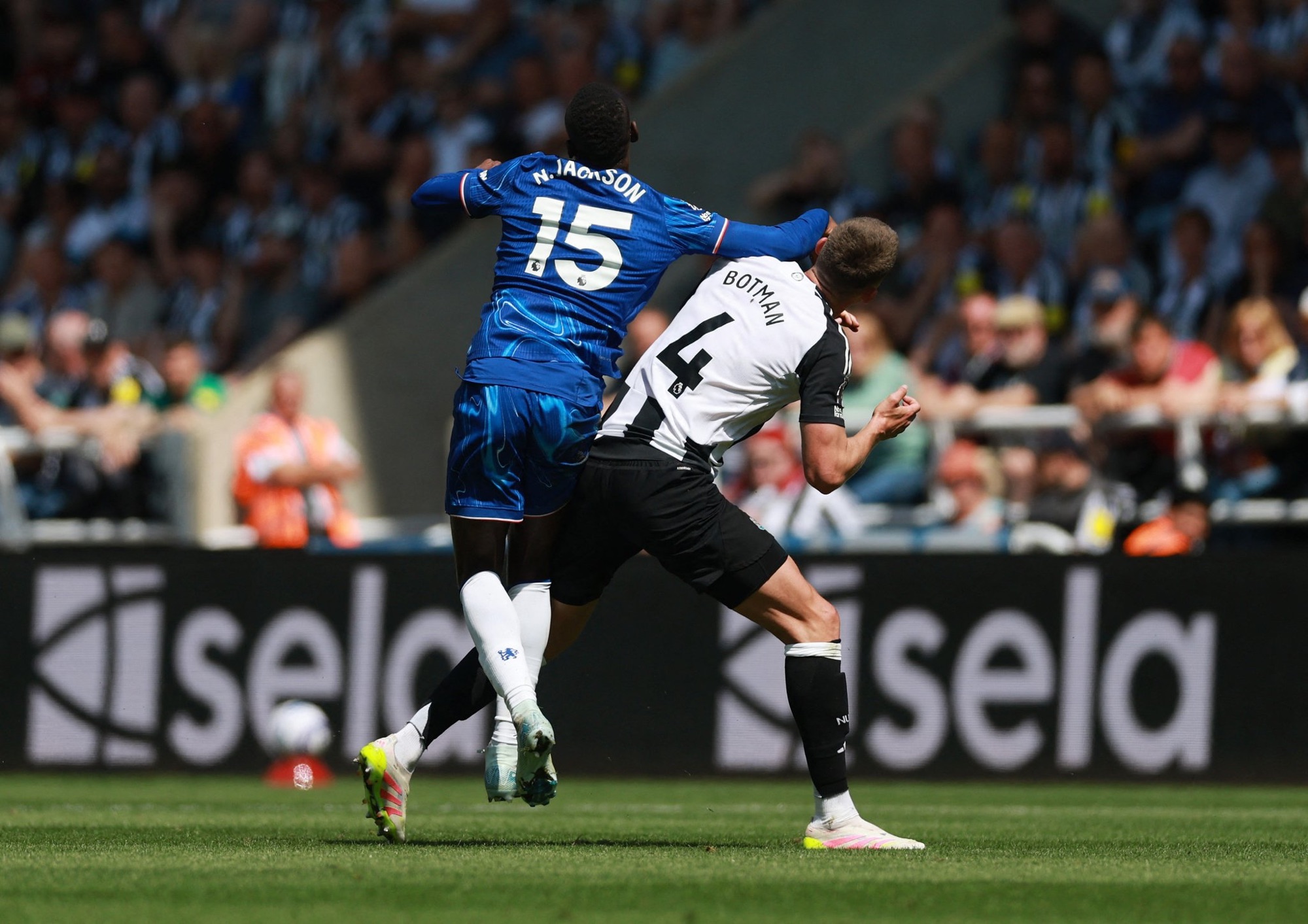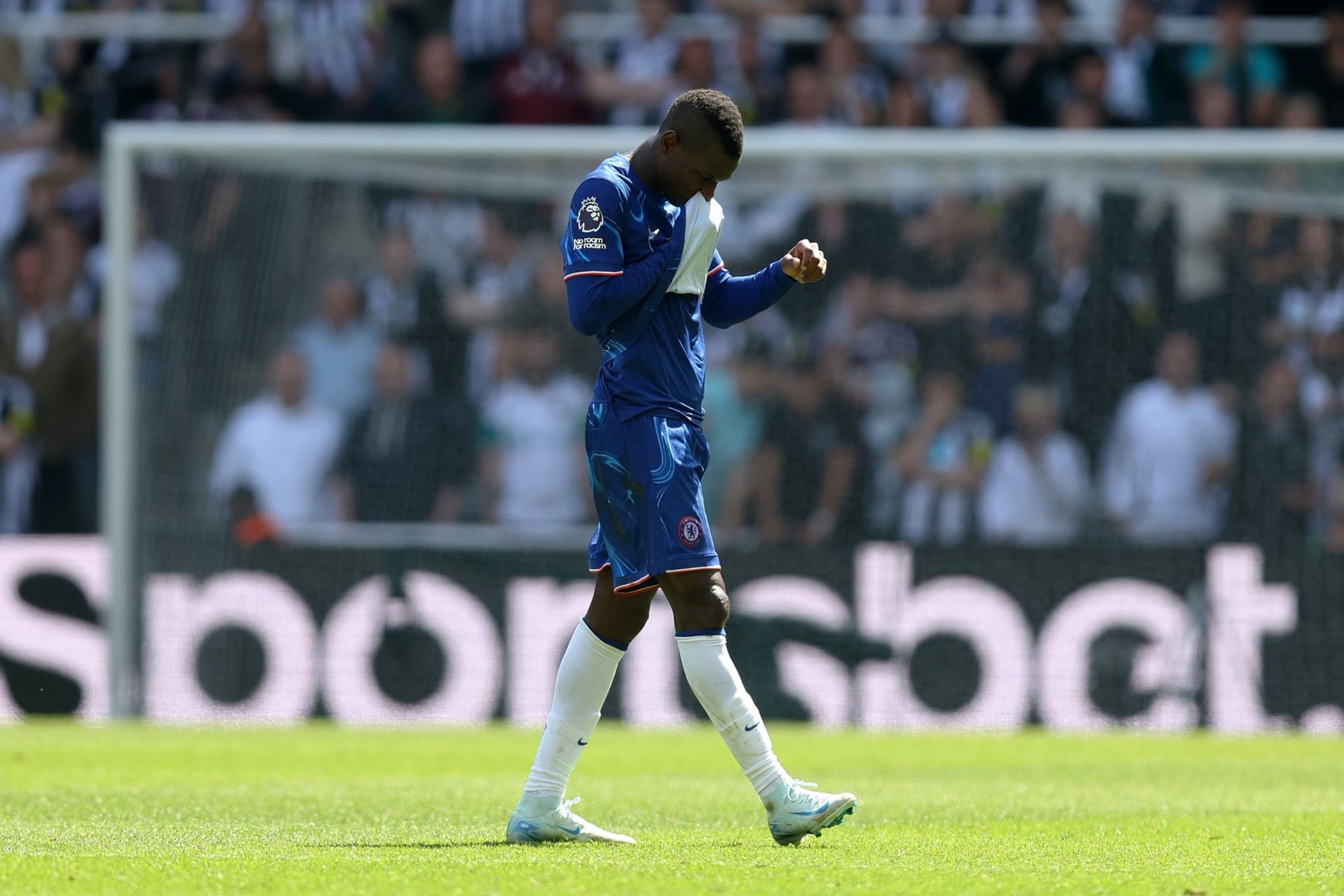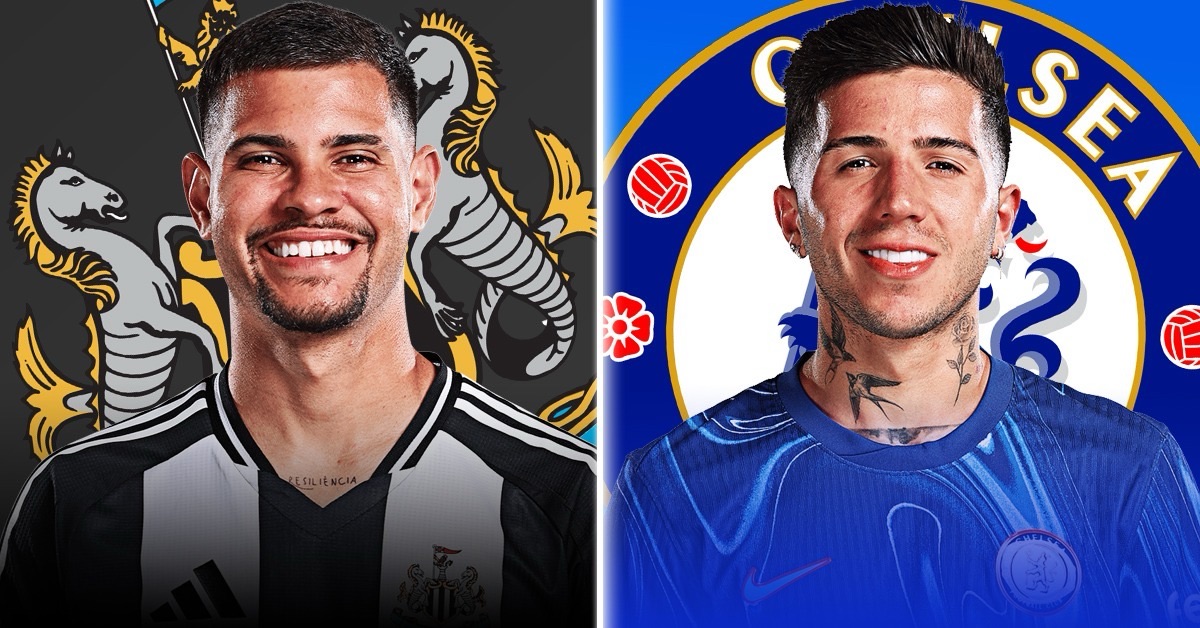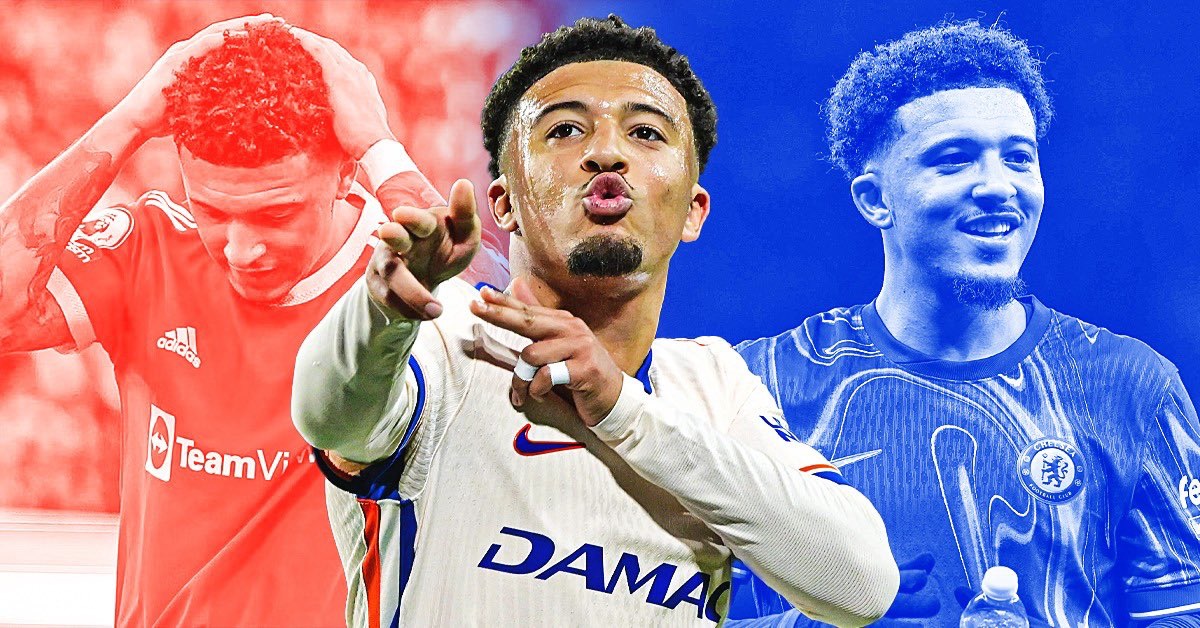Ruben Amorim is a 39 year old Portuguese coach, who started his managerial career with Casa Pia in the 2018/19 season, after completing a “High Performance Football Coaching” internship under Jose Mourinho.
Amorim also completed a postgraduate course in “psychomotor education” prior to taking his first role with Casa Pia, enhancing his man management skills and ability to understand the emotions of his players, and how social environment can play its part.
He then took over the Braga reserves (third tier of Portuguese football) in September 2019, which led to his opportunity with the Braga first team in January due to the dismissal of Ricardo Sa Pinto.
During this time, Amorim led Braga to a 1-0 victory against Porto in the Taca da Liga final, delivering his first silverware as a coach.
In March 2020, Sporting took the decision to appoint Amorim, and he has gone on to win Sporting’s first top division title in 19 years (2020/21 season), as well as winning a second and third Taca de Liga, winning it three years in a row.
He now sits 2nd in the Primeira Liga, two points behind first placed Benfica (with a game in hand).
Sporting also look a force in Europe, and will face Atalanta in the Europa League round of 16, as they look to go further than their quarter final exit last season against Juventus.
But how does Amorim set up, what is his philosophy, and how could he fit at Chelsea?
Let’s take a look…
Tactical set-up & Philosophy:
Ruben Amorim sets his Sporting side up in a 3-4-3 formation, but has a very modern build up structure, partnered by a fluid pressing structure.


Amorim wants his side to play a possession based style, with a high emphasis on his back three playing progressive passes between the lines.
In possession, his three central defenders will spread out to increase the pressing distances for the oppositions attackers, with the midfield pivot in a narrow central position to help circulate the ball when necessary.
But also, to drag opposition midfielders up and leave space behind for progressive passes to be played into the forwards.

The wingbacks typically provide the width, whilst the two “wingers/inside forwards” play more narrow and closer to the striker.
A key principle of Amorim is his desire to play vertical when possible, he wants to utilise his players’ passing ranges, either finding those incisive passes to the inside forwards in central zones to progress play.
His players also play switches to the wingbacks to stretch the opposition.
You will also often see Gyokeres (Sporting striker) become the receiver in the space between the opposition defensive and midfield line, combining with the narrow inside forwards to gain control in this area of the pitch.
Against lower block oppositions, Amorim’s team tends to increase their volume of crossing.
This tends to see the wingbacks combining with the pivot players and forwards to get into crossing positions.
Sporting will then look to have good box occupancy with the striker, inside forwards, one or even both of the pivot players attacking the box, and the opposite side wingback at the back post.
When playing teams that sit in a deeper block, one of the pivot players will typically drift higher up, especially once control has begun to be established in the game.
This can see the 3-2 build up shape become a 3-1, allowing the other pivot player to operate between the lines, and create an overload on either side of the pitch.

Another key feature with Sporting’s striker (Gyokeres) are his channel runs, making central defenders make the decision to follow him when running into the channel between the fullback and centre-back.
This can create space for the inside forwards to attack the space left centrally, as shown in the image above.
Defensive structure & Pressing:
Amorim sets up in a 5-2-3 out of possession, the idea of his defensive and pressing structures are to stop central progression, and set traps against the sideline to win the ball back.


The front five for Sporting (front three and double pivot) look to stop central progression higher up the pitch, looking to force it wide.
The idea is to stop any central progression, to force the opposition into wide areas where Sporting can then trap them against the sideline with a more aggressive press.

The trigger for this will be the ball going into a wide area between the inside forward and wingback on that side.
This is when the wingback will jump up to press against the sideline, the pivot player closest will also converge on this area, using the sideline as an “extra defender” and looking to win the ball back.
This is lower risk in this area of the pitch due to the sideline acting as another deterrent, lowering the options for the team in possession.

Due to the pivot being part of the press further forward when initiated, the central centre back in the back three has an important job to step up into midfield areas if the ball manages to make it through.
This defender has to be aggressive to put this player under pressure and not allow them to turn easily.
When this happens, the wide centre backs will cover the space behind the central centre-back, giving that extra protection due to being in a back five (having three central defenders).

Another feature of Sporting’s press to be considered is the fluidity in the front five when pressing.
If one of the pivot players decides to jump out and press the ball, the inside forward will drop behind them and cover the space they have left.
The zone replacement of these five in the press is very important, to ensure no gaps are left for the opposition to progress the ball centrally.
If the opposition does bypass the first press, and gain established possession in the middle third of the pitch, Sporting can then have their pivot collapse into a deeper role, making a more compact block for teams to break down.
How could Amorim look at Chelsea?:

This is a template squad I have made, of how things could look under Amorim at Chelsea.
Many of these positions could be flexible, and there could be players he tries in different areas (e.g. Mudryk as a wingback, Carney as an inside forward).
The only reason I haven’t included Gallagher is due to my belief that he could very likely be sold, however if he was to stay.
I think he could do a brilliant job in either of the double pivot positions, pressing with intensity and covering ground back and forth.
The reason I have put Carney as a secondary pivot option is mainly due to his ball carrying, and the fact that against lower blocks, the second pivot player sometimes drifts forward more, something Carney could do.
I think he would be used in multiple roles though, inside forward being another one due to his ability to receive the ball comfortably between the lines.
The key areas I think Chelsea would recruit under Amorim are upfront, another central defender (capable of playing in the middle of a three due to Silva being on his way out), and possibly a left wingback depending on the Maatsen situation (has a release clause).
Osimhen/Jackson :
Firstly I will touch on the striker position, somewhere I believe Chelsea will go big this summer, whether that be Osimhen or someone else.
I believe Osimhen and Jackson would be an elite pair of strikers for Amorim to have at his disposal, due to their differing qualities and style of play.
Jackson has many of the traits that Amorim values in his current centre-forward, Gyokeres.
Ability to run the channels, combine play in tight areas of the pitch with the narrow inside forwards, and good technical dribbling ability and ball control for around the box.
Where Jackson currently lacks compared to Gyokeres is his clinicality in front of goal, and his aerial ability.
Gyokeres currently has a +0.19 on Goals-xG (per 90) in the past year, whilst Jackson is only at +0.01 for Goals-xG (and this would be even lower based on this season for Chelsea).
Whilst Gyokeres isn’t an aerial specialist, he also offers 1.45 aerials won per 90, compared to Jackson who wins 0.99 aerials per 90.
Osimhen however adds those assets missed by Jackson, whilst also having the same ability to run the channels and combine play with bounce passes to the narrow inside forward players.
The Nigerian forward has a +0.13 Goals-xG ratio per 90, slightly lower than Gyokeres but higher Jackson, and also adds an elite level of aerial ability, winning 2.43 aerials per 90, and winning 53.4% of his aerial duels (which ranks better than 87% of forwards).
Osimhen’s ability to run the channels as Amorim expects from his striker – to combine play by allowing the inside forwards to use bounce passes off of the “focal point” in this instance, and his ability to pin defenders with his strength and get the team up the pitch would be brilliant for Amorim’s system.
Whilst Osimhen isn’t as good a dribbler as Gyokeres with tight ball control, he still has the ability to beat his man with a quick turn of pace, holding defenders off and finding his way to goal.
Against lower blocks Osimhen’s aerial ability helps when the volume of crosses increases (as spoken about against lower blocks), giving him plenty of chances to attack the ball.
The Pivot (Enzo and Caicedo)
Many people seem to be worried about the pivots role for Amorim due to the expensive acquisitions Chelsea have made in this area of the pitch.
The main concerns would be the pivot players only averaging 50/60 passes per 90 and the distances they cover during pressing.
Firstly, Caicedo would fit very well for Amorim, the licence to press higher up when trapping teams and win the ball back in advanced areas would be perfect for him, whilst his ability to recover in big spaces is also top tier.
He covers a lot of ground, and with the central centre-back offering protection for space left behind, Caicedo’s more aggressive pressing/tackling ability would be better utilised.
The main worry for many people would be Enzo Fernandez, and whether you can get the most out of his masterful passing range with only 50/60 passes per game, and whether he is mobile enough to press and recover in central areas.
Firstly lets touch on the pressing responsibilities, as mentioned before having that third central defender offers protection behind the pivot, meaning there is less responsibility for both of them to recover centrally if the first line of press is beat.
By having such a natural ground covering midfielder next to him (Caicedo or Lavia) the recovery workload would not be as heavy.
Enzo’s ability to win ground duels is actually an underrated aspect of his game making him effective in the first press, and meaning he can offer stability when the defensive structure collapses into the deeper block.
Now for the main concern of many, his passing volume under Amorim. Whilst 50/60 passes per game is low for a midfield pivot player, this doesn’t mean the effectiveness can’t be there.
As mentioned earlier, Amorim likes to play vertical passes and progress the ball between the lines, this is something Enzo excels at with his limitless passing range and passing empathy (understanding of how others want/need to receive the ball to be most optimal).
Whilst central defenders for Amorim make a good amount of the long passes averaging between 15-20 long balls attempted between them, Morita and Hjulmand (pivot players) also make close to 10 long balls between them per game.
If Amorim is given a passer of Enzo’s quality, especially when he places a high value on vertical passing, he would want to tap into Enzo’s ability to do this for him.
Maybe not necessarily ensuring he has 100+ touches per game, but by putting him in positions to use his passing range and affect the game in this way.
Morita still produces 1.05 key passes per 90, and Enzo would be able to increase the effectiveness of this metric in the pivot due to his passing ability.

The last thing to mention is that Amorim still allows him pivot players to make movements to receive the ball in space, to make these vertical passes.
Often, the central centre-back can step up alongside one of the pivot players, giving the other the licence to make a move into space (as seen in the image above, Morita moving into a wide left position to receive and switch play/go long).
This is something Enzo also likes to do, he has a tendency to drop into the left channel to play long passes from this area, much like Toni Kroos of Real Madrid.
Inside forwards (Nkunku, Palmer, Mudryk?) :
Amorim wants his inside forwards to contribute with goals, be comfortable receiving the ball from the centre-backs in the half spaces between the lines, and combine in tight areas of the pitch.
They also have to carry out their pressin duties, being ready to trap against the sideline and to replace the pivot players if they leave their position to press.
This is somewhere that Nkunku and Palmer would excel due to their close ball control in tight areas, ability to put their body between the defender and ball when receiving in tight spaces, and their goal scoring prowess when in and around the box.
Goncalves and Edwards, the two main inside forwards for Amorim at Sporting put up over 5 shots between them per 90, make just over 5 key passes per 90 between them, and make just under 10 Shot-Creating actions between them per 90.
Nkunku and Palmer have similar numbers putting up around 6 shots per 90 between them, and making just under 10 Shot-Creating actions per 90.
However, their key passes are currently quite a bit under the 5 of Goncalves and Edwards, with under 3 key passes per 90 between them.
I believe in Amorim’s system, both would improve their key pass numbers as they would be in close proximity to each other, and able to combine.
A player that could also thrive in this area under Amorim is Mykhailo Mudryk.
Whilst Mudryk’s numbers currently don’t match those of the Sporting forwards, or the other Chelsea options, the raw ability he has would be something Amorim could perhaps bring out of him.
Amorim would be using his burst of pace to get onto vertical forward passes, and having his excellent ball striking technique in and around the box.
Like the others, Mudryk is comfortable receiving in central areas, and if anything his best creation comes from those central zones, playing balls in behind, and playing bounce passes in quick combinations.
Others that could work in this area are Angelo (playing a similar role with Strasbourg currently) and Madueke (although I have a different thought for Madueke which i’ll mention in the next section).
Defenders (Ball playing centre-backs and wingbacks) :
The last thing I will go over is the defenders, and how some of Chelsea’s players could fit these roles under Amorim.
Firstly, Levi Colwill would flourish under Amorim. His passing range, calmness on the ball and ability to carry the ball out suits the wide central defender role under Amorim, much like Sporting’s left centre-back Goncalo Inacio.
His ability to pick passes between the lines into the forwards would be utilised heavily under Amorim, getting the best out of one of his main assets.
The central centre-back role has slightly different responsibility, due to the gap sometimes left behind the pivot, and therefore that defender having to step up more aggressively to cover the space.
A few ways I think Chelsea could navigate this, is firstly replacing Thiago Silva (who looks to be on his way out) with Diomande who currently plays under Amorim at Sporting.
Diomande has played as the central centre-back in the absence of Sebastian Coates at times, and therefore has already begun to learn the role and its differing responsibilities to the wide centre back role.
This would also then link to the return of Wesley Fofana, who I believe could play as either the right centre-back due to his ability to defend wide areas, and carry the ball forwards, but also as the central centre-back due to his duel heavy nature.
This would allow him to be the most aggressive defender, stepping up and winning duels behind the pivot, with cover from the other central defenders behind him.
Lastly Axel Disasi could be an option for this area, as an imposing figure, he has the strength and power to step up and win duels in this area, as well as having the ability to find passes between the lines.
This option would also be very good when the side collapse into a more rigid lower block shape, due to his aerial ability and box defending.
Reece James could be utilised in the right centre-back role, as well as the right wingback role.
Due to the emergence of Malo Gusto, the options in this area would be very strong, allowing for right wingback rotation, but also having both on the pitch at times.
By having James in this right centre-back role, it would have less workload for him getting up and down, which could help slowing down his injury frequency.
He also has the vertical passing range and ability to be very good in the first build up phase, picking passes between the lines and at times driving the ball forwards.
This also then allows Gusto to bomb up and down the wing, offering the width, putting balls into the box and using his combination of speed/ball control to get into dangerous areas down the right flank.
Another player that I believe could be utilised in this right wingback role, is actually Noni Madueke.
Much like Sporting player Geny Catamo, Madueke is naturally a winger, however we have seen Madueke increase his defensive workrate and understanding this season to force his way into the Chelsea side.
His natural build, pace and power is something that could definitely be worked with at wingback, it would allow Chelsea to get another “more natural attacker” on the field in certain types of games, and I believe this could actually work really well for him.
The left hand side could be the most tricky to nail down, as Chilwell typically does perform better as a wingback, and Amorim may like his engine to get up and down, as well as the ability to cross the ball.
However he is another injury troubled player, and therefore if Maatsen does leave the club, a new left wingback option may be required to strengthen the squad.
Conclusion:
To conclude this piece, I believe Ruben Amorim could work wonders with this crop of Chelsea players.
His man management is something that has been praised throughout his early management years, which is a big strength.
Most importantly, his ability to provide a stable environment for the development of the players, mixed with a clear tactical philosophy for the players to learn and follow could be the perfect blend to take Chelsea where they want to go.





